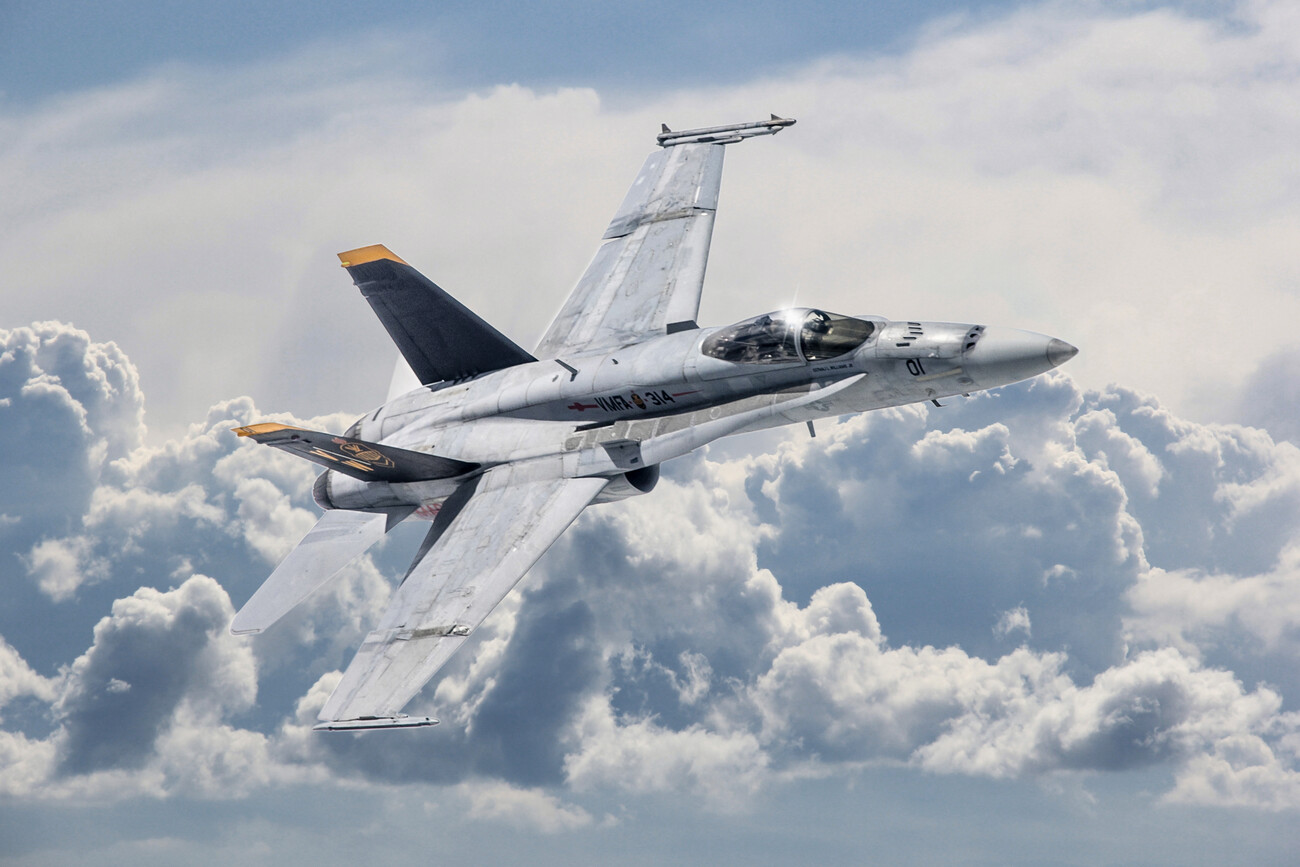As the conflict between Ukraine and Russia continues to evolve, the question of which military assets can enhance Ukraine’s combat capabilities remains crucial. One of the most discussed potential game-changers in this scenario is the F/A-18 Hornet, a versatile and highly capable multirole fighter jet that could significantly impact the dynamics of air combat. But can the F/A-18 Hornet truly make Ukraine a more formidable force in the skies against Russia?

The F/A-18 Hornet: An Overview
The F/A-18 Hornet, developed by McDonnell Douglas (now Boeing), has been a stalwart of modern naval aviation since its introduction in the 1980s. This multirole fighter is renowned for its adaptability, allowing it to perform a wide range of missions, including air superiority, ground attack, and reconnaissance. With its twin-engine design and variable-geometry wings, the Hornet offers impressive performance across a spectrum of flight conditions.
Enhanced Combat Capabilities
The F/A-18 Hornet’s combat capabilities are well-suited to addressing a variety of threats. Its advanced avionics and radar systems enable it to engage multiple targets simultaneously, providing a significant advantage in air-to-air and air-to-ground engagements. The Hornet is equipped with a range of weaponry, including AIM-120 AMRAAM and AIM-9 Sidewinder missiles, as well as precision-guided munitions for ground attacks. This versatility would be particularly advantageous in countering a variety of Russian aerial threats, from modern fighter jets to advanced surface-to-air missile systems.

Strategic Advantages for Ukraine
For Ukraine, integrating the F/A-18 Hornet into its fleet could offer several strategic advantages. First and foremost, the Hornet’s multirole capabilities would enhance Ukraine’s ability to conduct both defensive and offensive operations. The jet’s air-to-air capabilities could help achieve air superiority, which is crucial for protecting Ukrainian airspace and supporting ground operations. Furthermore, its precision strike capabilities could target key Russian military infrastructure, potentially shifting the balance of power on the battlefield.
Another significant advantage is the Hornet’s interoperability with NATO forces. As Ukraine seeks closer integration with Western military standards and practices, operating the F/A-18 Hornet would facilitate smoother coordination and support from allied nations. This alignment with NATO standards could enhance Ukraine’s operational effectiveness and contribute to more cohesive joint operations with Western allies.

Challenges and Considerations
Despite its advantages, there are challenges associated with the integration of the F/A-18 Hornet into the Ukrainian Air Force. First, there is the issue of logistics and maintenance. The Hornet’s complex systems require specialized training and support infrastructure, which could be a significant hurdle for Ukraine. Additionally, the transition to operating a new type of aircraft involves substantial investment in training, maintenance, and operational readiness.
Furthermore, the current geopolitical climate adds another layer of complexity. The introduction of advanced Western aircraft like the F/A-18 Hornet could provoke a strong response from Russia, potentially escalating the conflict. It is essential for Ukraine and its allies to carefully consider the timing and implications of such a move to avoid unintended consequences.

Conclusion
The F/A-18 Hornet holds the potential to significantly enhance Ukraine’s air combat capabilities against Russia. Its multirole versatility, advanced avionics, and NATO interoperability make it a formidable asset in modern warfare. However, successful integration will require overcoming logistical challenges and managing the broader geopolitical implications. As Ukraine continues to seek ways to strengthen its defenses and assert its position in the conflict, the F/A-18 Hornet could indeed play a pivotal role in reshaping the aerial dynamics of the battlefield.





